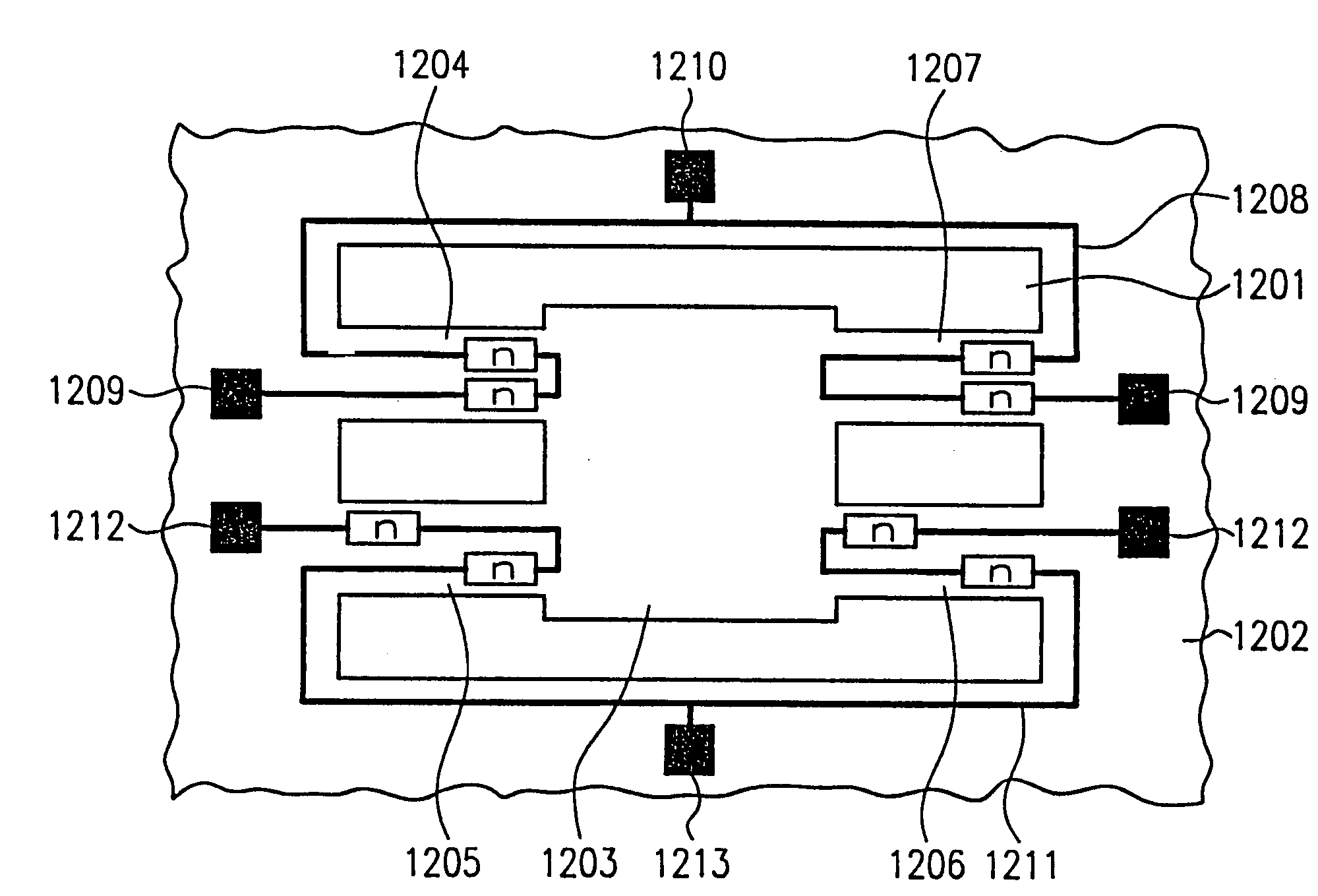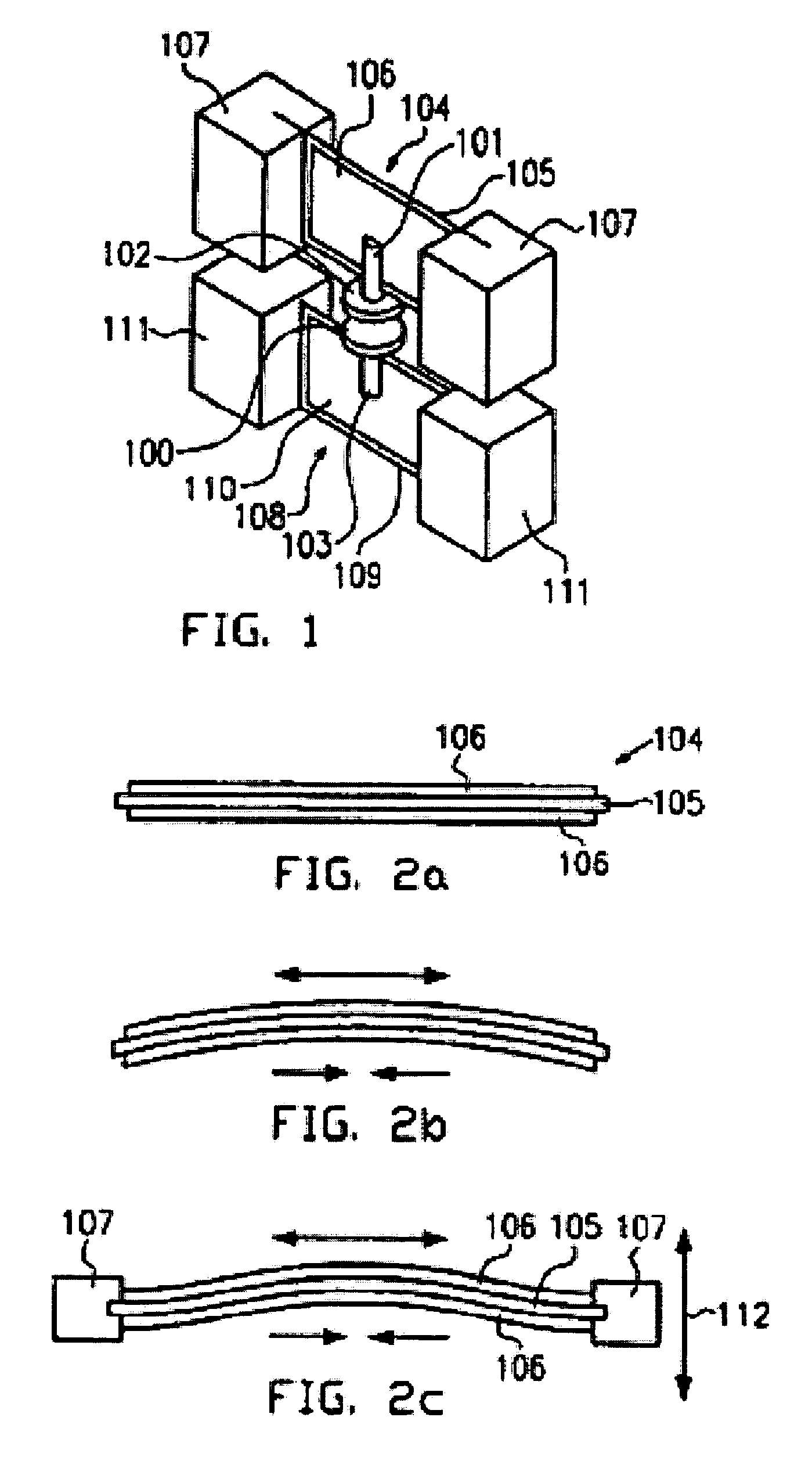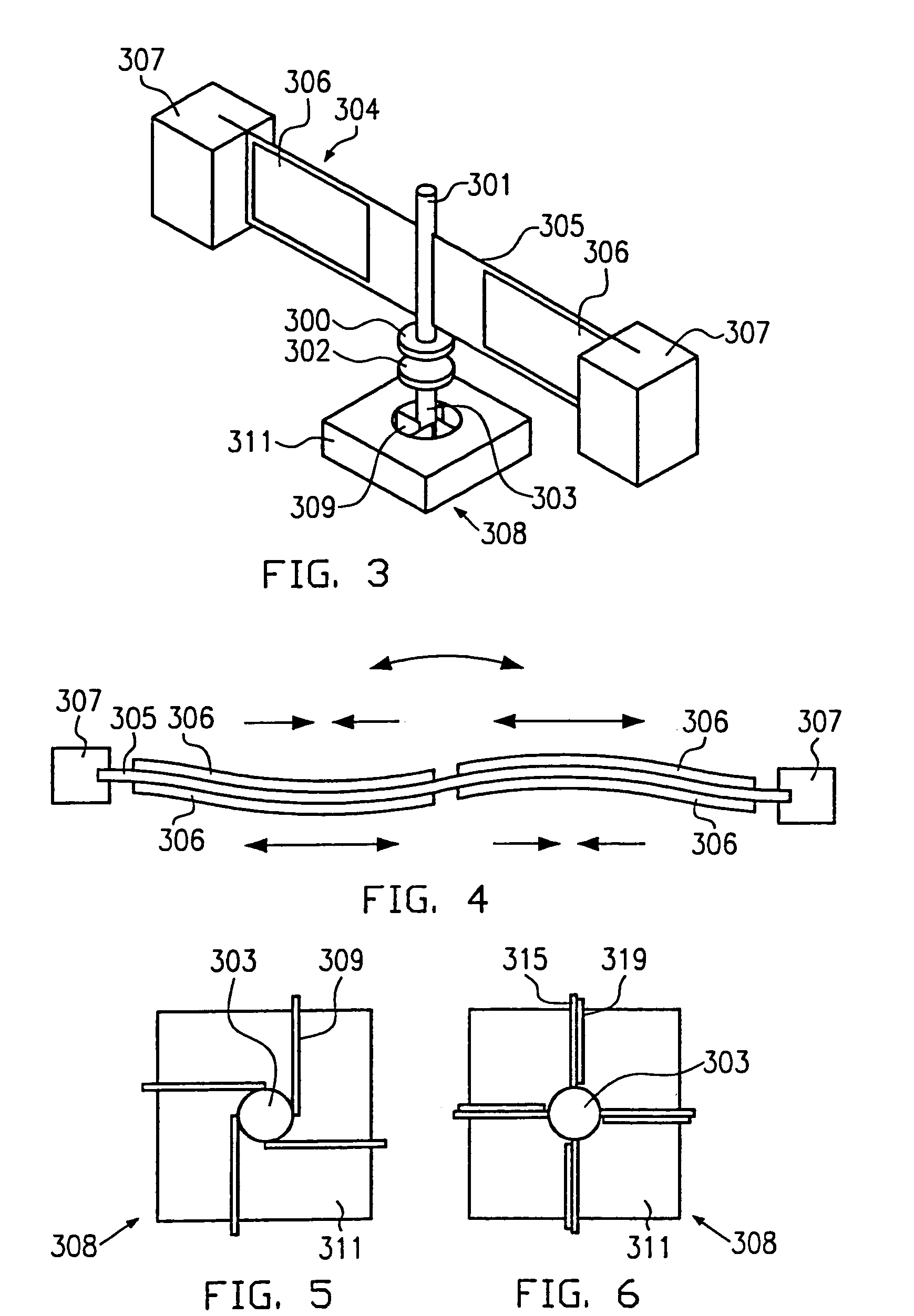Tether plate sensor for measuring physical properties of fluid samples
a technology of fluid samples and tether plates, applied in the direction of force measurement by measuring optical property variation, instruments, using mechanical means, etc., can solve the problems of inability to fully calibrate, difficult to analyze intrinsic material properties, and inability to achieve extensive calibration, etc., to achieve fast condition change rates, low cost, and the effect of easy maintenance of a relatively small sample volum
- Summary
- Abstract
- Description
- Claims
- Application Information
AI Technical Summary
Benefits of technology
Problems solved by technology
Method used
Image
Examples
Embodiment Construction
[0040]With reference to FIGS. 1 and 2, a translational embodiment, i.e. an embodiment that produces a translational displacement between a top surface and a bottom surface of a sample, of the miniature rheometer according to the present invention will now be described in detail.
[0041]In FIG. 1, merely a portion of the translational embodiment of the miniature rheometer of the present invention is shown. A moving plate 102 is mounted on a shaft 1101. Another plate 100, which will also be referred to as the “fixed plate” even though this plate may be movable, is arranged parallel to the moving plate 102. Plates 100 and 102 have surfaces which are arranged in an opposed relationship so as to be parallel to each other. The geometrical structure as well as the dimensions of the respective surfaces are selected so as to result in a desired configuration. Although the plates 100 and 102 are shown as circular elements, any other geometrical structure, such as squares or rectangles, etc., ma...
PUM
| Property | Measurement | Unit |
|---|---|---|
| volume | aaaaa | aaaaa |
| volume | aaaaa | aaaaa |
| side length | aaaaa | aaaaa |
Abstract
Description
Claims
Application Information
 Login to View More
Login to View More - R&D
- Intellectual Property
- Life Sciences
- Materials
- Tech Scout
- Unparalleled Data Quality
- Higher Quality Content
- 60% Fewer Hallucinations
Browse by: Latest US Patents, China's latest patents, Technical Efficacy Thesaurus, Application Domain, Technology Topic, Popular Technical Reports.
© 2025 PatSnap. All rights reserved.Legal|Privacy policy|Modern Slavery Act Transparency Statement|Sitemap|About US| Contact US: help@patsnap.com



